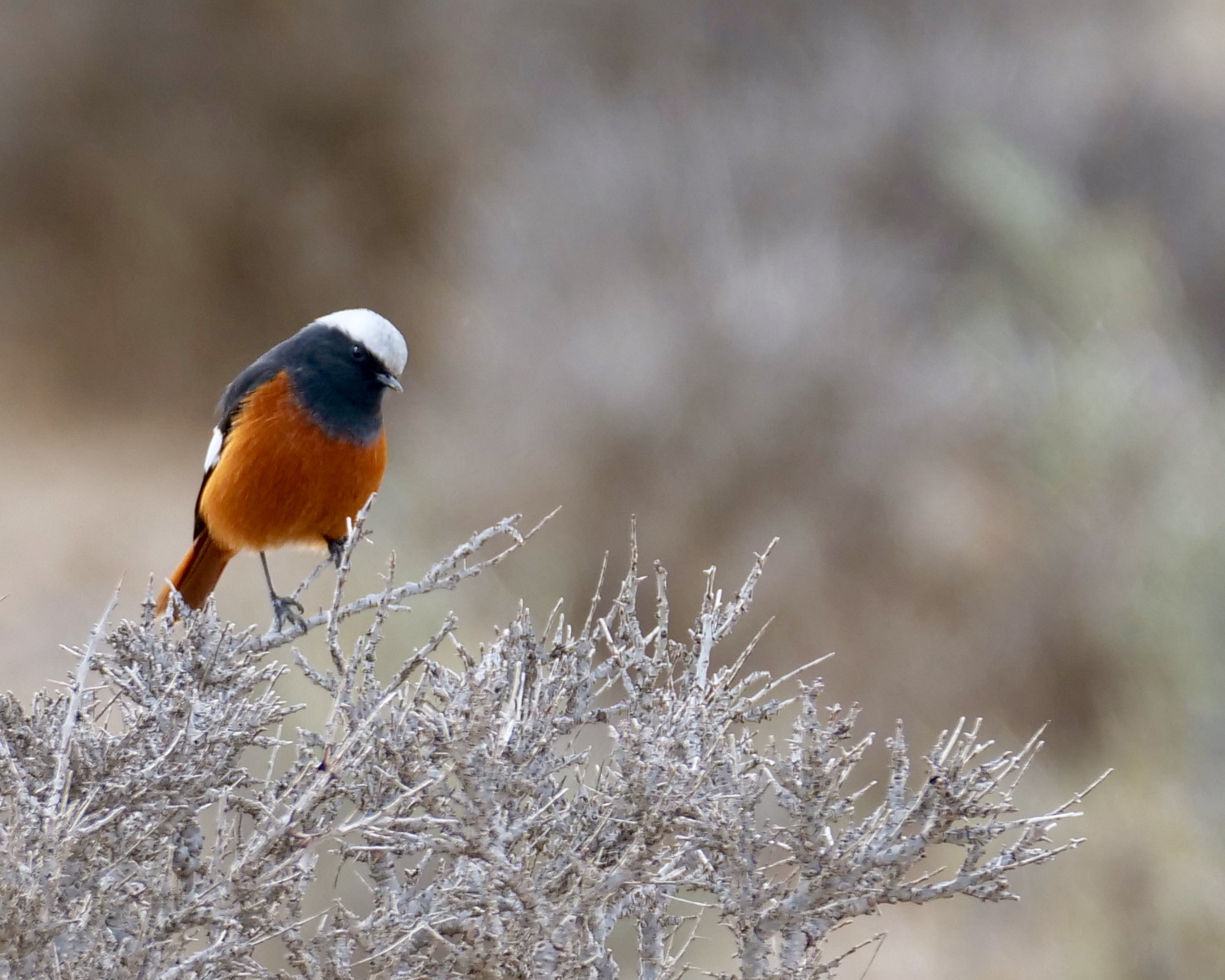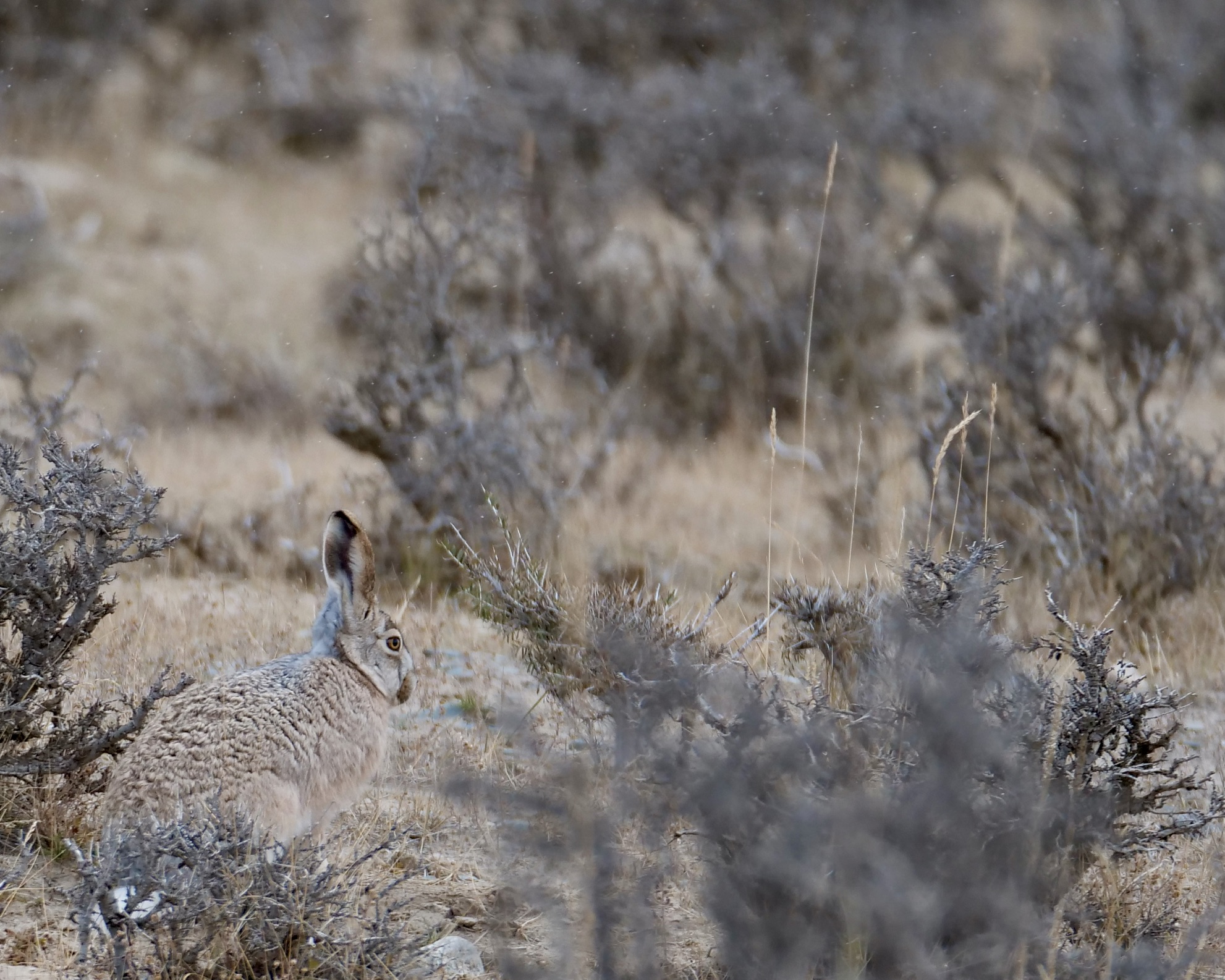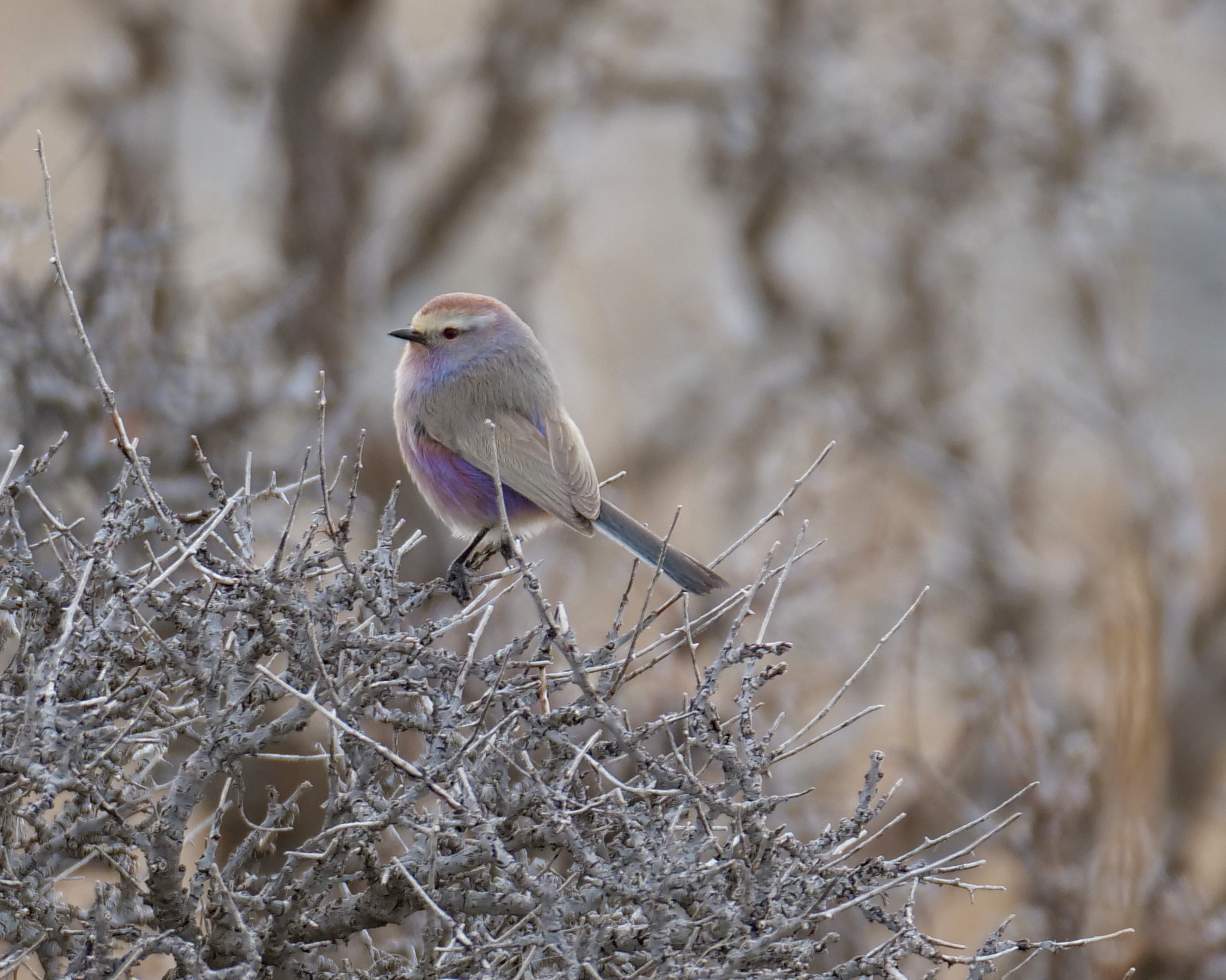The featured bird is very tiny, very hardy.
“His” valley’s sparsely vegetated floor – the “low ground”, locally – all sits within 200 metres either side of 4000 metres above sea level.
If transplanted to the Tibetan Plateau, New Zealand’s highest peak would fail to reach this valley’s lowest point.
Pictured above is a male White-browed tit-warbler, Leptopoecile sophiae.
If you were to place a (small) 100 gram tube of toothpaste on one side of a pair of scales, you would then have to place 15 or so of these birds on the other side in order to “balance” the scales.
This bird mostly lives in “poor” country at high altitudes in Central Asia.
So does the much larger, heavier (but still small – 18 cm long, 21-29 grams) Güldenstädt’s redstart.

They share such “desolate” places with surprisingly many other bird and animal species, all of them well adapted to living in very demanding, very high, very dry places where temperatures are often below zero…but can soar surprisingly high.
One such place is Yeniugou, or Wild Yak Valley, in the northern part of the Tibetan Plateau.
Recent road-building has placed Yeniugou within day-tripping distance of Budongquan or Golmud
The former is a truck stop on the main road from China-proper to Lhasa. Budongquan is a drab, little flatland hamlet. At 4,603 metres, it is one of the world’s highest permanent settlements. If Mont Blanc were transplanted here, its peak would be a modest hill, rising just a whisker more than 200 metres above the plain.
Golmud is this region’s “big smoke”. On the Tibetan Plateau, Golmud’s population of more than 200,000 is second only to Lhasa. Xining is much bigger, but Xining sits below/adjacent to the Plateau, not on it. Golmud sits in a basin, at “only” 2800 metres – about is as low as you can go on the Plateau-proper.
In Wild Yak Valley the morning of 19 October 2019 brought “poor” conditions for wildlife-spotting – grey and windy, with occasional snow flakes that vanished as they hit the valley floor.
By local autumn standards, it was a warm day.
Most of our fellow travellers were obviously disappointed.
My beloved and I were not.
Firstly, we still managed to see more than a few creatures, also including lots of typically-shy Woolly hares, Lepus oiostolus, aka “Tibetan hares”.

Secondly, and most especially, such a “clouds, swirling” day, was perfectly splendid, if one moved one’s focus from “species count” to “raise your eyes and gaze across – and up,up, up – a magnificent, wild landscape”…as you will see in this post’s sequel, coming very soon at Pelican Yoga.
